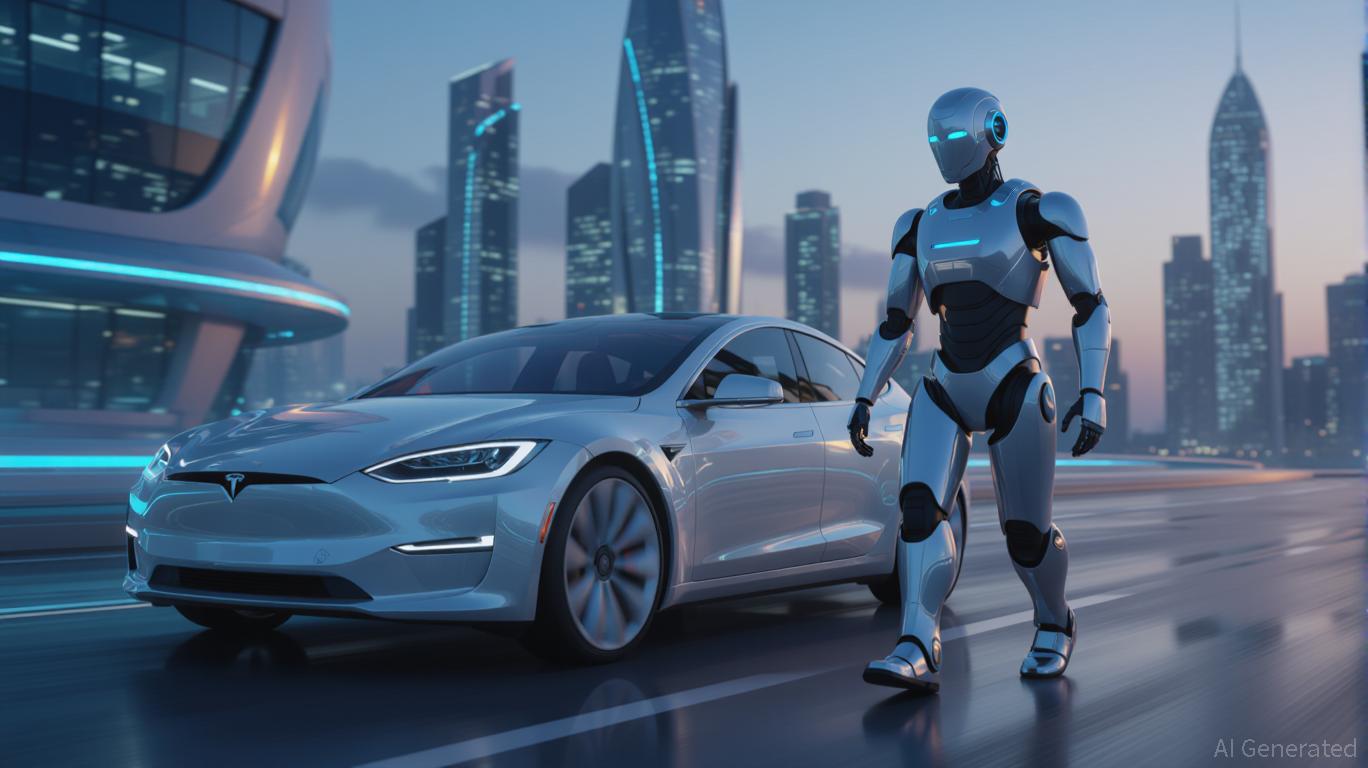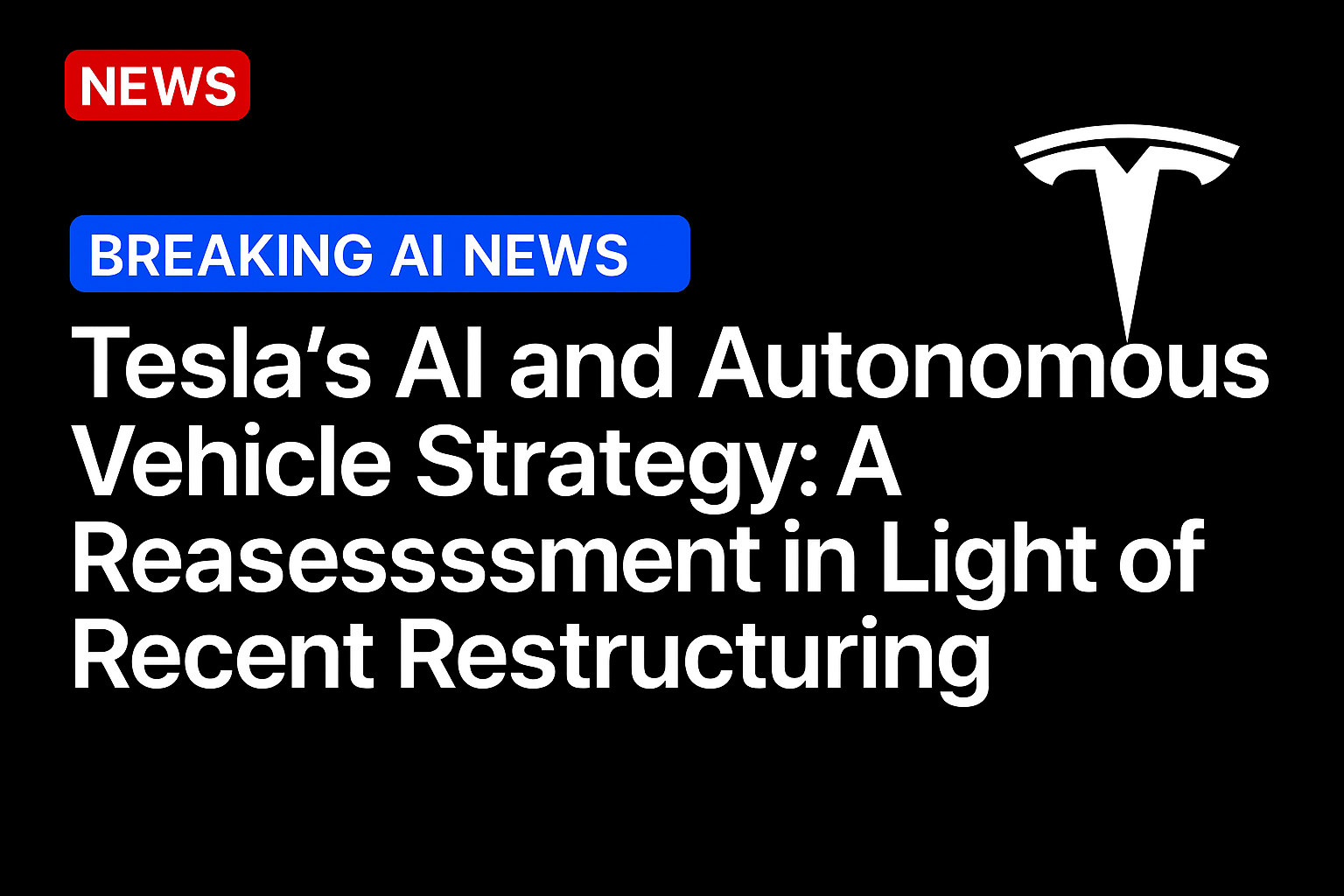Tesla’s recent decision to disband its Dojo supercomputer team and pivot toward inference-focused AI chip development marks a pivotal shift in its long-term strategy. This move, announced by CEO Elon Musk in 2025, reflects a recalibration of priorities amid evolving market dynamics and internal challenges. For investors, the implications of this restructuring extend beyond short-term operational adjustments, raising critical questions about Tesla’s ability to maintain its competitive edge in the autonomous vehicle (AV) and AI markets.
The Dojo Dilemma: Ambition vs. Execution
The Dojo supercomputer, initially hailed as a cornerstone of Tesla’s AI infrastructure, was designed to train machine-learning models for Autopilot, Full Self-Driving (FSD), and the Optimus humanoid robot. Built on Tesla’s custom D1 chip, the project aimed to reduce reliance on external chipmakers and establish a proprietary training advantage. However, persistent delays, key personnel departures (including co-founder Peter Bannon and engineers like Ganesh Venkataramanan), and a talent drain to startups like DensityAI exposed structural weaknesses in the project.
By disbanding the Dojo team, Tesla RACE -1.08% acknowledges that maintaining dual chip architectures—one for training and one for inference—was inefficient. This decision aligns with a broader industry trend: most AV and AI companies now prioritize inference, where real-time data processing is critical for autonomous systems. While Dojo’s cancellation may disappoint those who viewed it as a $500 billion market cap catalyst, it also eliminates a costly, resource-intensive project that had outlived its strategic utility.
The Inference-First Strategy: Efficiency Over Vertical Integration
Tesla’s new focus on inference chips—specifically the AI5 and AI6—represents a pragmatic pivot. These chips, optimized for real-time AI operations in vehicles and robotics, will be manufactured by Samsung and TSMC TSM -0.33%, reducing the company’s reliance on in-house production. The AI5 is expected to enter production by late 2026, with AI6 following in subsequent years. This shift allows Tesla to consolidate its AI development efforts, streamline R&D costs, and accelerate deployment timelines for FSD and Optimus.
The partnership with Samsung, valued at $16.5 billion, is particularly noteworthy. By diversifying chip sourcing beyond TSMC, Tesla mitigates supply chain risks and secures long-term production capacity through 2033. This move also aligns with Musk’s broader vision of integrating xAI (his AI venture) with Tesla’s robotics and autonomous systems, leveraging X’s data for training. While external partnerships may dilute Tesla’s vertical integration, they offer scalability and cost efficiency—critical advantages in a market where rapid iteration and deployment are paramount.
Competitive Implications: Can Tesla Outpace the Field?
Tesla’s inference-first strategy positions it to outperform competitors in two key areas: speed to market and cost efficiency. Unlike rivals such as Waymo, Cruise, or traditional automakers, Tesla’s AI chips are embedded in over 500,000 vehicles globally, creating a vast, real-world training dataset. This “fleet learning” advantage, combined with AI5/AI6’s optimized inference capabilities, could accelerate FSD’s rollout and enhance its reliability faster than competitors relying on cloud-based training.
However, the absence of a dedicated training supercomputer like Dojo introduces risks. Training large AI models requires immense computational power, and Tesla’s reliance on external partners (e.g., Nvidia NVDA +1.07%, AMD) for training infrastructure could slow progress. Additionally, the AV market is becoming increasingly crowded, with startups and tech giants investing heavily in specialized hardware. Tesla’s success will hinge on whether its inference chips can deliver performance parity with competitors’ training-focused solutions.
Investment Considerations: Balancing Optimism and Caution
For investors, Tesla’s restructuring presents a mixed outlook. On the positive side:
1. Cost Efficiency: Redirecting resources to inference chips and partnerships reduces capital expenditures and accelerates ROI.
2. Scalability: Samsung’s manufacturing capacity ensures a stable supply chain, mitigating bottlenecks.
3. Market Positioning: A faster FSD rollout could strengthen Tesla’s premium EV appeal and justify higher margins.
Yet risks remain:
– Execution Uncertainty: The AI5/AI6 roadmap is untested, and delays could erode investor confidence.
– Competition: Waymo, Cruise, and Apple’s rumored AV projects could erode Tesla’s first-mover advantage.
– Valuation Pressures: A $500 billion Dojo-driven valuation premium is no longer in play, potentially limiting upside.

Conclusion: A Strategic Pivot, Not a Setback
Tesla’s decision to abandon Dojo and streamline AI chip design is not a retreat but a recalibration. By focusing on inference, the company is aligning itself with industry trends and prioritizing agility over vertical integration. While the absence of a proprietary training supercomputer introduces challenges, the partnership-driven approach offers flexibility and cost advantages.
For investors, the key metrics to monitor include the AI5/AI6 production timeline, FSD adoption rates, and the performance of Samsung’s manufacturing partnership. Tesla’s ability to maintain its fleet learning edge while leveraging external expertise will determine whether this restructuring strengthens or weakens its competitive position. In a market where execution trumps ambition, Tesla’s pivot may prove to be a shrewd long-term play—provided it can deliver on its AI and AV promises without the Dojo.
Source: https://www.ainvest.com/




